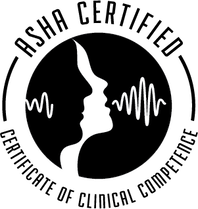|
Nothing strikes more fear in the heart of an SLP than those two little words... lateral lisp. To most parents it seems like an easy fix. It's just a sound or two that their child has trouble with... a few speech therapy sessions and boom, it should be fixed, right? Nope! Not that simple. Now if you're NOT a speech language pathologist, let me first define some terms. Primarily speaking, there are frontal lisps and there are lateral lisps. A frontal lisp occurs when the tongue either protrudes between, or touches, the front teeth and the sound produced is more like a /th/ sound than a /s/ or /z/. Many children go through a perfectly normal phase of producing a frontal lisp. Most will outgrow this and will be able to produce a correct /s/ sound by around kindergarten. Children who continue with a lisp past this age typically require speech therapy to correct it. A lateral lisp occurs when the air escapes over the sides of the tongue and into the cheeks.... this can occur on several sounds, /s/, /z/, /sh/, /ch/ /zh/, and /dj/. Parents of children with lateral lisps often describe their child's speech as sounding "mushy" or "slushy". These types of lisps are NOT developmental. Children with lateral lisps do not typically outgrow it and will require speech therapy to correct. Now speaking to my SLP colleagues.... if you have a child with a lateral lisp I'm assuming you've done a thorough oral motor/mechanism exam to determine if the child has any structural or functional issues. If not... do it! There are often myofunctional issues with these kids and those should be addressed (that's a post for another day). Let's talk about speech therapy for a lateral lisp.... The first thing we have to do is elicit the correct production of the target sound, whether /s/, /sh/, or /ch/ (I always start by targeting voiceless phonemes). Essentially, these kids have to learn to anchor the lateral borders of their tongue to the interior margins of their molars to prevent air from escaping laterally. There are plenty of techniques out there to help cue correct tongue placement, such as the butterfly technique, using straws, and fantastic resources from Pam Marshalla. But, I prefer what I call a phonetic approximation approach. I start by eliciting /s/ from the /t/ sound. It looks something like this...
BUT THAT'S NOT THE SECRET! If your little clients are anything like mine they quickly figure out that I'm trying to get them to say /s/! Ugh... which means they automatically go right back to that lateral airflow when they move to the word level. Oh, the frustration! So, here's my "secret" (drum roll please)... Tell the child you're NOT actually going to work on the /s/ sound! That's right.... you're done with /s/ and aren't even going to talk about it anymore! You are going to create a completely new sound... the "flat tire" sound! As we hold out that /t/ sound in step 2, it actually sounds like a tire losing air. It's the idea behind my new deck of speech sound cues from Bjorem Speech Publications created specifically for children who lateralize. The reason these new picture cues work so well is because you have a visual representation of their "new sound". Often when kids start adding a newly learned non-lateralized sound into different positions of words they begin to realize we're really working on /s/ and go right back to lateralizing again. But these cards help me remind them... NO /s/ sounds! We're only using the "flat tire" sound now. Then we start "removing" the /s/ sound from words and replacing it with that "flat tire" sound. This mental shift has been the key to my clients creating a new motor plan for correct production of /s/. I'm telling you, it's literally that simple. Need more information about this technique? There is much more detailed information included on the insert inside the Bjorem Speech Publications deck for Lateralization. Plus this deck also includes "new sound" cues and target words for each sound that kids lateralize.... including /z/, /sh/, /ch/, and /dj/! And don't forget to follow me on Instagram to see LOTS of real life therapy videos showing how I use this technique! ***A quick word about carryover... Don't forget to use those principles of motor learning to promote generalization of these skills. Working through a hierarchy of constant to variable positions in words/phrases, blocked to randomized practice, and simple to complex tasks will ensure your kids with articulation deficits won't be in years of speech therapy without significant progress.***
58 Comments
Leila
6/15/2020 03:24:06 pm
Thank you! I have painstakingly tried all the techniques with my daughter. This is the only one I have found that gets her to produce the correct sound!
Reply
Jane
7/20/2020 04:17:17 pm
I'm working with my daughter over the summer on the lateral lisp. I was wondering if you could give an example with practice words using blocked vs randomized and constant to variable practice? As far as simple to complex we do work in isolation, syllable, word and sentences.
Reply
Emily
8/4/2020 11:13:07 am
Hi Amy! I am wondering if ever wrote an article about the structural/functional issues that can cause lateral lisp? If so, where can I find it? Thank you!!
Reply
Oh I haven't written one... yet! I talk a lot about it on my Oral-Facial Exam, though. But, I encourage all SLPs who are dealing with lisps to take a myofunctional course! (I took the ones on speechtherapypd.com). There can frequently be underlying structural/functional issues that may need to be addressed first.
Reply
Jamie
3/14/2023 03:24:57 pm
Hi Amy, Do you know which myofunctional course you took on speechtherapypd.com? There are so many and they range from 1 hour to over 10 hours! Thanks!
Edie Ayer
3/30/2024 07:31:47 am
I worked with a 4 year old for a year who corrected all phonological processes quickly. The last 3 months we worked on lateral s, z, sh, ch with no improvement. These were the only errors and they did not have an educational impact. I am not an OMD specialist so at the annual review I recommended therapy be tabled until child saw OMD/SLP specialist and ENT and pediatric dentist. Child is 90% intelligible and language is above average. Sometimes oral/myofunctional/structural issues need to be addressed before articulation can be improved. I did not have the training to do that.
Javier K
9/3/2020 01:15:51 am
Hi, for my whole life I have experienced a lateral lisp and never had the chance or money to see a speech therapist to correct it. Now that I am 21 and on my own, I would like to find the best to way to go about correcting my lateral lisp. For words that end and start with /s/ & /t/ my speech sounds mushy. It feels like my mouth is filled with saliva when I speak. I have been frustrated by this for years because of both the ridicule and some people asking me to repeat myself so that they can understand me. Any help for going forward would be greatly appreciated!
Reply
Amy
9/27/2020 03:35:54 pm
I would highly recommend finding a speech language pathologist near you... ask if they specialize specifically in workin with people who have lateral lisps. It's a vey specific type of therapy and not all SLPs are skilled.
Reply
Alex
10/12/2020 03:36:46 am
I am 27 and have a lateral lisp. Currently in therapy for that and other speech issues....
Reply
Alex
1/20/2021 11:59:08 am
Hi any reccomendations?
Reply
Amy Graham
3/6/2021 04:55:45 pm
Hi Alex, I would highly recommend seeking an evaluation from an SLP with expertise in either speech sound disorders and/or myofunctional therapy.
Elizabeth SLP
12/28/2020 03:35:52 pm
I have a student who is 5.5 years of age. She demonstrates a fronted production for /s/ and /z/ and lateral production for "sh", "ch", "j". She also has errors on voiced and voiceless "th". She produces a w/r. She is stimulable for /s/, /z/ and "sh" in isolation. Her overall speech intelligibility in connected speech is 85% to the trained listener. She is in general education kindergarten. My question, is which phoneme (s) would you target first? Should I target the lateral productions as they are not developmental? Thanks for your input in advance.
Reply
Amy
12/28/2020 04:58:49 pm
Hi Elizabeth. I usually try and select my targets based on a few variables: what will be immediately impactful on intelligibility, what's more easily stimulable, and what's most important/relevant to the child.
Reply
Michaela
1/6/2021 07:17:20 am
Hi - I am working with a student with a frontal lisp (he puts his tongue against his front teeth). When he has mastered the sounds with "ts" and is able to do it in the initial position with co-articulation, where do you go next? How do you make sure your stimulating the sound without the "ts" and in all positions?
Reply
Amy Graham
3/6/2021 04:57:20 pm
Hi Michaela,
Reply
Samantha Nelson
1/25/2021 12:27:14 pm
Hi Amy! I have been using your boom cards and they are so awesome. I have a student who is able to produce final ts in words and prolong it correctly but when we add a vowel sound, she says "hattttssss---pauses and says "say" with lateralization. I have tried to provide verbal and visual cues to keep going and not to take a breath but it is not working. Do you have any recommendations? thank you so much!
Reply
Amy Graham
3/6/2021 04:59:06 pm
Hi Samantha,
Reply
Sally
3/6/2021 01:56:07 pm
Please answer Alex above — Looks like he may have been missed a couple times. He’s an adult who wants to correct his lateral lisp. Thanks!
Reply
Avery
3/22/2021 12:50:09 pm
Hi!So I’m 20 years old and growing up I’ve been in and out of speech therapy and all my life I’ve been super self conscious of my lisp and it really has impacted my life in the worse ways.I never speak in public, I hated having to do presentations at school and basically whenever I had to talk to anyone I was very self conscious and always tried avoiding the “S” sound .More than anything I wanted to get rid of my lisp but I didn’t know how or what I was doing wrong and then I found this blog that changed everything.Using the “t” sound technique I was able to make my first ever correct “s” sound and It felt so different from how I was usually making it.For the first time I knew what I was doing wrong when making the “s” sound and now I have started to really get better with my “s” sound.I was always scared that I would have a lisp forever and now Im hopeful and excited to keep perfecting the “s” sound and it has made me a lot more confident and overall more happy .I just wanted to say thank you and I wanted you to know I’m really grateful for this blog that really has changed my life .
Reply
Amy
3/26/2021 02:25:30 pm
I'm so very happy to hear this! Blessings to you!
Reply
Cheryl
8/17/2021 10:36:55 am
I'm an adult therapist who fills in at a long term trach/vent pediatric unit. Could you tell me where to start with learning how to properly assess for speech sounds disorders and/or myofunctional therapy? I am presently working with an 8 year old who shows great promise in making progress with his speech intelligibility.
Reply
Amy Graham
10/20/2021 02:03:10 pm
Hi Cheryl,
Reply
Lee Ann
9/27/2021 01:49:42 pm
Is it too early for a 3 year, 7 month old girl to work on a lateral lisp? I know she won't outgrow it, but I wonder if she'll get frustrated b/c of her age. She has a frontal lisp as well but many other age appropriate and later developing sounds.
Reply
Bethany Ruth McMahon
9/30/2021 12:06:46 am
As someone who is 31 who has a lateral and dentalized lisp- I would say yes but don't push it. I'm not a professional. I remember coming up with different words that I could say in a more understandable way. I would say "Mommy, I'm drinky" and she wouldn't allow me a drink until she practiced saying "thirsty" three or four times. She did this as soon as she understood I wasn't going to grow out of this lisp, so maybe 4 years old and up. I remember being deeply frustrated when she made me do this, but it didn't result in me having a tantrum or anything. It didn't really help either, as she wasn't a speech therapist. So maybe the resources here would be more helpful than my mother's method. But maybe not push it too much until she's older.
Reply
Bethany Ruth McMahon
9/29/2021 11:59:49 pm
I'm 31, went through speech therapy for probably 10 years. I have a lateral and dentalized lisp. Speech therapy never really worked for me- but that was in the mid 90s to the mid 2000s. There's so many more resources available via the internet. What really helped me, was when we got a "modern" computer (I remember it had a Y2K Safe sticker on it). It came with a microphone. I would say words and play them back, trying different methods until my speech was understandable. And yes, my lisps were so bad that nobody outside of close friends and family could really understand me.
Reply
Hi Bethany! I know that Amy would definitely be able to point you in the right direction as well, but since I'm reading this comment right now and I don't know when the next time is that someone will see it, I'd like to answer. I hate to hear that others are not being kind to you. I think you would benefit from myofunctional therapy! What area do you live in?
Reply
Amy Graham
10/20/2021 02:06:29 pm
Hi Bethany,
Reply
Caroline Giamb
10/28/2021 02:41:10 pm
Hi,
Reply
Amy Graham
11/1/2021 10:57:21 am
Have you utilized cognitive reframing and phonetic approximation that I talk about? I have many instructional videos on my Instragram @grahamspeechtherapy. You could also take my recent course from Bright Ideas "Feel Empowered Treating Speech" where I go into detail about my approach for different phonemes being lateralized. https://www.bethebrightest.com/speech-sound-disorders-series/
Reply
Michael Weston
3/21/2022 12:00:35 am
Hey so I recently found out that I’ve been saying my s’s wrong my entire life. I always knew I had a lisp, but I never did any therapy or anything to fix it. Well the other day I started doing research on my lisp and it was a lateral and I read that your not supposed to have the s sound come from your back teeth. This was a shock to me and now I am practicing pushing the air forward. However, while practicing I sound off to myself and not normal at all, but then when I play back the words on video it’s normal with no lisp. Will this problem of it sounding weird to me get better over time? And will the having to constantly think before saying any s ch J or z word stop and it become second nature to me? And what are the best ways to practice to get the new mouth positioning locked into my brain.
Reply
Amy
3/23/2022 09:09:42 am
Hi Michael,
Reply
Gale L.
5/5/2022 07:25:39 pm
Hi, I just evaluated a 9yr old who has a frontal lisp, tongue thrust, and lateral "sh, ch" and j. She also has a high narrow palate and is meeting with her orthodontist to discuss getting an expander next week. Should I try to remediate her artic errors before the expander placement or wait and see what happens after it's removed - which might be in a year from now.
Reply
Amy
6/7/2022 11:15:43 am
Hello Gale,
Reply
Ali Noorie
6/2/2022 06:52:31 pm
I am 40 years! Yes, 40 years old and have lateral lisp since childhood. But just 3 years ago started working on it.
Reply
Amy
6/7/2022 11:13:59 am
Hi Ali,
Reply
Ali Noorie
6/7/2022 07:06:31 pm
Thank you Amy. I will book a consultation with you. Thanks Ali
Laura Staub
8/8/2022 07:20:00 am
Amazing notes on how to tackle the slushy s my son uses!
Reply
Amy
8/12/2022 11:33:16 am
Hello. I do not know of anyone specifically in your area, not do I offer teletherapy. But, I do offer consultations over Zoom... more info here:https://www.grahamspeechtherapy.com/consultation-request.html
Reply
Katie W
10/25/2022 02:55:25 pm
My client can produce the /s/ accurately but lateralizes the /ch/. Should I still start with the ttttt-ts technique?
Reply
Amy
10/31/2022 08:01:20 am
Yes, I typically start with /t/ for /ch/... it's easier to shape than from /s/.
Reply
Jack
11/9/2022 08:14:14 am
Hi, I'm 33 years old and have lateral lisp. I have a question regarding the shape of your tongue when correctly pronouncing the 's' because I don't know what is. Mainly the shape of the tip my tongue: should it be kind of sharp like an arrow as I press it against the sharp edge of the teeth? Or how would you describe it?
Reply
Melissa
1/10/2023 12:43:14 pm
Hi Amy,
Reply
Amy Graham
5/20/2023 08:49:14 am
Hello! I'm afraid I can't give specific information about any particular child without assessing myself, but I do offer consultations if you'd like to discuss your case further. Just click the link in the "Services" tab.
Reply
Mandy
2/14/2023 10:20:29 am
Hi Amy,
Reply
Amy
2/12/2024 01:04:11 pm
If you click on my blog it's the first article that pops up.
Reply
Hilary
2/15/2023 07:56:14 pm
Any tips on a 5.5 kid that has a lateral lisp and is having difficulty making /t/ in isolation. It sounds "slushy" in isolation. He seems to be able to make it in final position ''eat" clearer. It also appears he has low tone in the tongue and it tends to rest low. He drools often, so we are working on swallowing spit before we practice out sounds to bring awareness.
Reply
Amy
2/12/2024 01:04:49 pm
There may very well be myofunctional deficits impeding progress in speech therapy.
Reply
Molly
5/19/2023 04:31:25 pm
Hi Amy,
Reply
Amy Graham
5/20/2023 08:47:15 am
Hi and thanks for taking the course. I write goals for 100% accuracy for all lateralized sounds in spontaneous speech.
Reply
Tessa
7/15/2023 01:25:15 pm
Hi, I’m currently working with a little girl (5 years old) with a lateral lisp. We have got to the stage of being able to produce the long t currently at the end of words however the moment I try to add a vowel after it eg. By putting it in the middle of words like Betsy she inserts a lateral lisp directly after the long t, even when I tell her we’re not doing the snake sound and I only want to hear a long t/flat tire sound. Any suggestions for how to stop her from inserting a lateral lisp after the long t when in the middle or beginning of words?
Reply
Stephanie
11/28/2023 06:38:09 am
I have a 4th grader with a significant lateral lisp that affects many sounds including T!! She is not stimulable for /t/ in isolation but can produce a glottal stop fine such as little, button, etc. I am completely stumped!!
Reply
Gabby
1/9/2024 02:42:42 pm
Hi Amy! Thank you for all your useful and accessible tools! I have 2 questions for you!
Reply
Amy
2/12/2024 01:08:20 pm
Hi Gabby,
Reply
Renae
2/8/2024 07:47:01 am
Is a lateral lisp on /s/ and /z/ ever a dialect or ESL thing? I have two siblings who are ESL students who present with the same lateral lisp. Not sure if I should pursue therapy or if it is a language difference. Their 1st language is Spanish.
Reply
Amy
2/12/2024 01:09:05 pm
A lateral lisp is not a language different in Spanish. So, yes please treat early!
Reply
Ashley
3/19/2024 01:43:33 pm
Hi Amy! Is there a specific age range that you wait to target lateral lisps? One of my colleagues evaluated a 1.5 year old who is lateralizing, but she also has language models from her 2 older siblings who also lateralize. The older siblings are starting speech therapy soon. Would love your thoughts!
Reply
Leave a Reply. |
|

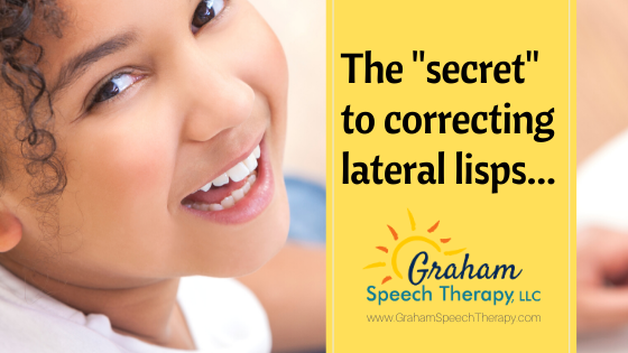
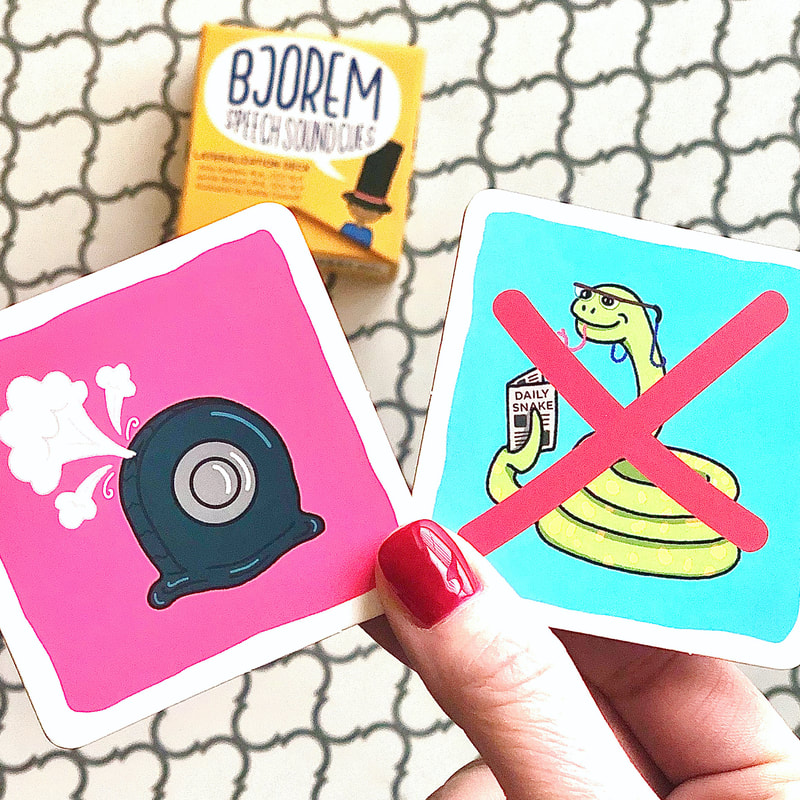
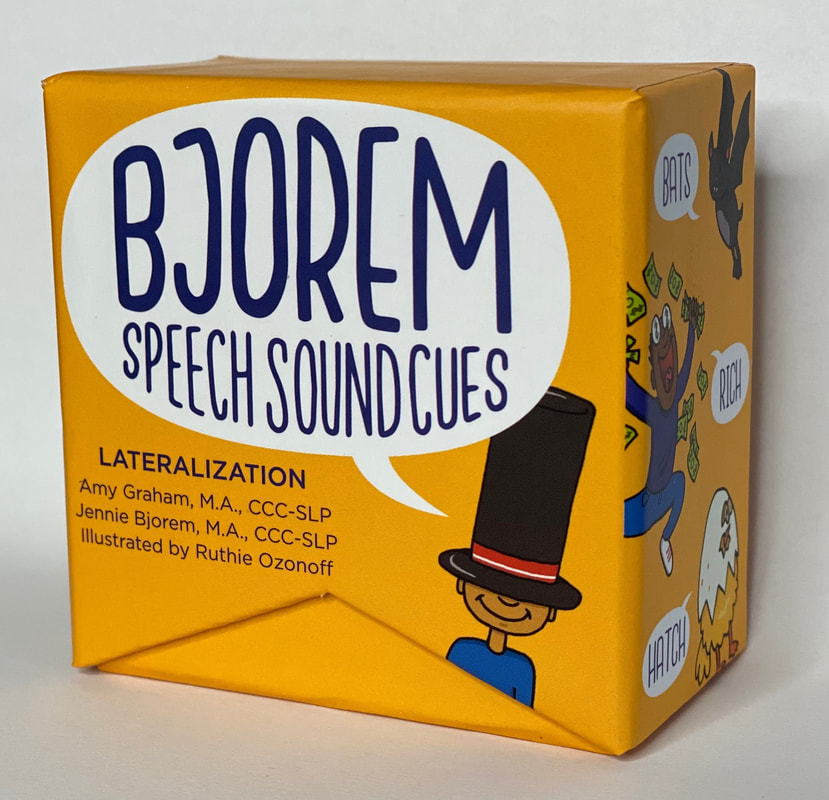
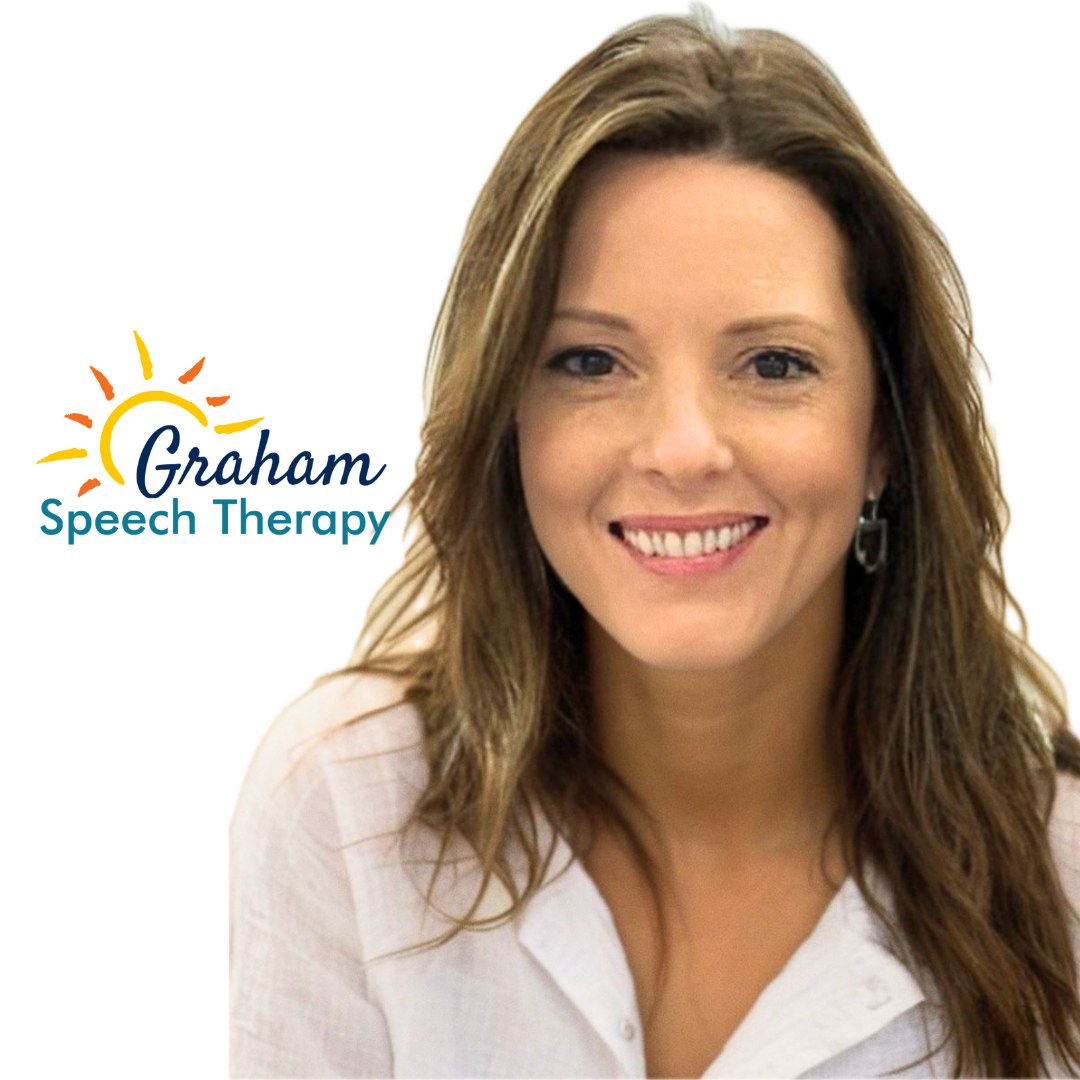
 RSS Feed
RSS Feed
